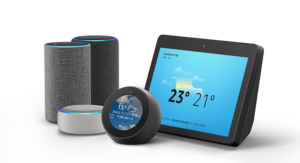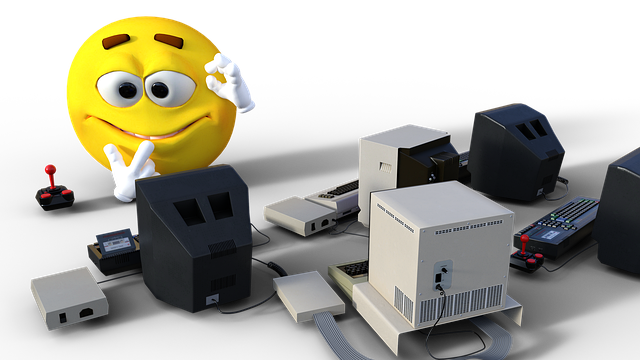Table of Contents
AI is an abbreviation for “Artificial Intelligence”
We all hear the word “AI” in our daily lives, but do you know what it really means?
In the first place, AI is an abbreviation of “Artificial Intelligence”, and it is read as “artificial intelligence”. “Artificial” means artificial, “intelligence” means intelligence, and in Japanese it is called ” artificial intelligence “. The term “artificial intelligence” was first used in 1956 by American researcher John McCarthy.
Definition and Meaning of AI
Next, I will introduce the definition of AI.
The Japanese Society for Artificial Intelligence translates the words of Professor John McCarthy, the creator of the word AI, as “the science and technology of creating intelligent machines, especially intelligent computer programs.”
However, currently, research on AI is progressing, and the current situation is that each researcher has a different definition.
For example, “An artificially created entity with intelligence. Alternatively, it can be a field that researches intelligence itself by trying to create it, or it is a “mecha with intelligence” or “a mecha with a heart”.
History of AI
Next, let’s talk about the history of AI. AI has come to be recognized by the world as it has come to be used in various fields in recent years.
Many people may say that they only learned about the existence of AI in the last few years, but in fact, AI research has been going on since the 1950s.
Since the 1950s, AI has experienced booms and stagnations. By the way, it is said to be the third boom now.
From here, we will explain the history of AI from the 1950s when research began to the present, for each boom.
First AI Boom | Beginning of AI
The first AI boom was in the 1950s and 1960s. In other words, the word “AI” was born about 70 years ago.
The term AI originated at the Dartmouth Conference, a workshop held in the summer of 1956 in Dartmouth, a city in the eastern United States. Therefore, for the first time, machines that think like humans are called ” artificial intelligence “.
At the same time, at this conference, artificial intelligence was widely recognized by society as a field of science.
The conference was an opportunity for many people to embark on AI research, and is considered an essential point in understanding current AI.
At that time, AI was able to instantaneously “distinguish” a large number of patterns that humans could not, and was able to solve difficult puzzles and mazes overwhelmingly faster than humans.
It was around this time that AI began to challenge boat games such as shogi and chests.
Second AI Boom | Birth of Expert Systems
The second AI boom was in the 1980s. During this period, “knowledge expression” became possible due to the birth of ” expert systems ” , which are AI modeled on human “thinking” .
Although there is no mechanism for self-learning, it predicts as many situations as possible in advance by experts and makes coping methods and judgments.
Third AI Boom | Emergence of Machine Learning and Deep Learning
The third AI boom is from 2000 to the present.
During this period, the practical application of ” machine learning ” , in which AI itself acquires knowledge from large amounts of data, that is, big data, progressed. Furthermore, in 2006, deep learning, in which AI learns the elements that define knowledge on its own, was proposed.
4 things AI can do
We have introduced AI so far, but do you know what AI can do in the first place?
Since “AI” is used in various fields, it may be difficult to intuitively grasp what it can do.
Therefore, in the following, we will discuss what AI can do.
- image recognition
- voice recognition
- natural language processing
- predict
I will introduce it with a simple application example divided into three.
image recognition
The first thing that AI can do is image recognition , a technology that recognizes what is in an image .
Image recognition is mainly used for object recognition, face recognition, and character recognition.
For example, taking a picture of a character and transcribing it into text on a computer, face authentication security for smartphones, photo processing apps, etc.
voice recognition
The second thing that AI can do is ” speech recognition ” that analyzes the voice uttered by a person and guesses the content.
Speech recognition is mainly used for transcription, automatic response, translation, unlocking, and sentiment analysis.
For example, there are services that transcribe conversations and automatically respond to corporate inquiries.
natural language processing
The third thing that AI can do is natural language processing , which recognizes and processes natural languages such as Japanese and English that we humans write and speak on a daily basis .
Programming languages are contrasted with natural languages. The difference between these two languages lies in the ambiguity of the words.
Based on this ambiguity of words, a technology called natural language processing is used to practically handle huge amounts of text data written using natural language.
Natural language processing is mainly used in “automatic translation,” “text mining,” ” chatbots ,” and “voice dialogue systems.”
predict
Prediction is AI predicting the future based on a large amount of data. You may have experienced that your past viewing history was reflected in the recommendation column of the video application. AI’s “prediction” function is also utilized.
In terms of business, it is useful because it can predict what customers want from logical data. Reflecting AI predictions in corporate decision-making will enable proper inventory management and efficient operations.
Recently, it is also used to predict the infection of Corona. Medical institutions and governments are using this data to inform future decisions.
5 things that use AI
AI is currently being used in all kinds of situations, and you may be borrowing the power of AI without even realizing it. Below are some of the things AI is used around us.
- Voice assistant function
- Over-detection air conditioner in factory
- cleaning robot
- self-driving car
- Stock price prediction medical institution
①Voice assistant function
The voice assistant function is a function that recognizes questions and sounds and answers them. It can perform speech recognition , analysis, and text conversion, and can respond appropriately to human words.
Amazon’s “Alexa” and Apple’s “Siri” are famous voice assistant services. It is also possible to link smart speakers with home appliances and operate them with voice assistants.
It helps to increase the number of Internet users because it allows users to easily search and ask questions without having to input data.

(2) Anomaly detection air conditioners in factories
An anomaly detection air conditioner is a system that detects anomalies by itself from past operation data when an anomaly occurs. Equipment malfunctions such as air conditioning in a factory may stop the production line or damage the stored items, which may result in huge losses.
Anomaly-detecting air conditioners learn data from normal operation and can quickly detect anomalies when they occur. Major electronics manufacturers such as Hitachi and Mitsubishi are promoting the development of anomaly detection air conditioners using this AI.
③ Cleaning robot
In fact, AI is also installed in the cleaning robot. iRobot’s “Rumba” is equipped with AI and provides usage that suits many people’s lifestyles.
For example, it can detect furniture such as sofas and tables and instruct it to clean around specific furniture. In addition, it can learn points that are often stopped by cables, etc., and propose to make it a no-entry area. You can clean more flexibly by setting this no-entry area and the place you want to clean more carefully.
In this way, the AI-equipped cleaning robot learns the more it is used, so that it is easier for the owner to use.

④ Self-driving car
You may have heard of self-driving cars. Attention is focused on automobiles that automatically perform all driving actions. From the perspective of legal development, self-driving cars with no one in the driver’s seat cannot run on public roads in Japan, but many automakers are working hard to develop self-driving cars.
Many of the cars currently on the market are equipped with support systems such as collision avoidance and following distance maintenance. Such features have led to a reduction in car accidents.
⑤ Stock price prediction medical institution
AI technology can also be used to predict stock prices. It is very important to predict the future spread of corona infection in the stock price forecast of medical institutions. AI can predict corona infections based on huge amounts of past data.
AI can learn from past stock price data, so the more data it has, the more accurately it can predict whether stock prices will rise or fall.
The future of AI
In the future, when AI technology has evolved further, it is said that AI will surpass human intelligence and the speed of its evolution will become unpredictable. The point at which AI surpasses humankind is the singularity .
The singularity, which became widely known after American futurist Ray Kurzweil proposed it in 2005, refers to “the turning point where AI surpasses human intelligence.”
In Japanese, it is translated as “technical singularity”.
This has a negative image of being robbed of jobs and being ruled by AI, but it is said to have a major impact on the arrival of a stress-free society and the development of science and technology.
Summary
AI is abbreviated as “Artificial Intelligence”.
In Japanese, it is called “ artificial intelligence .” Have you learned about its true meaning, how to use it, and what it will look like in the future?
We associate with AI used in various situations. In your future life, you will be able to learn more about AI if you are conscious of it.


